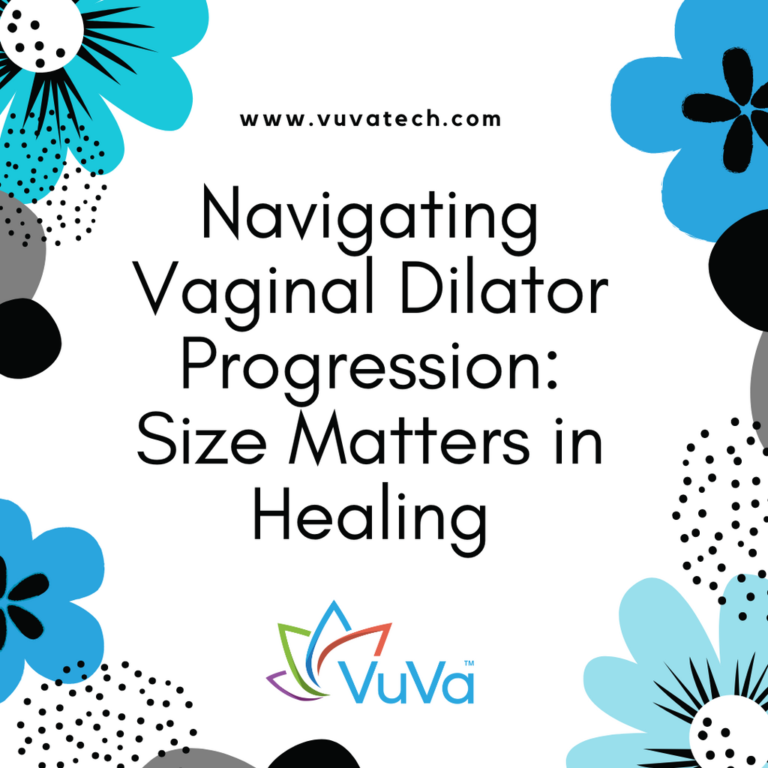| Tara Langdale
The vaginal dilator set is an essential tool for those recovering from certain gynecological procedures, dealing with conditions such as vaginosis, vaginal atrophy, vulvodynia, or undergoing gender confirmation surgery. These simple devices can go a long way in regaining the capacity, elasticity and comfort of the vagina during intimacy. But understanding how to properly size up and incorporate expanders into your self-care routine is vital to a successful recovery with minimal discomfort.
In this article, we’ll explore the process of vaginal dilator development, focusing on the importance of a step-by-step approach, tips for effective use, the psychological dimensions of the process, and practical tips for incorporating dilation into your routine.
Importance of gradual expansion
For beginners, the thought of using a dilator can be intimidating. However, medical experts emphasize the need to proceed gradually in order to avoid discomfort and the risk of injury. Starting with a size that feels comfortable is key, and steadily progressing to larger sizes over time allows the body to adjust without undue stress.
Tips for comfortable and effective dilator use
- Choose the right size:
Start with a dilator size that doesn’t cause significant pain – pain levels should stay below 3-4 on a scale of 10. If you engage in regular sexual activity or if you can comfortably insert a tampon, you can start with a larger size .
- Pay attention to psychological comfort:
It is normal to feel anxious about the procedure. Create a relaxing environment and engage in deep breathing or other relaxation techniques to ease any stress.
- Incorporate lubricants:
Use a generous amount of water-based lube to ease the insertion process. This minimizes friction and makes expansion more comfortable.
- Find a comfortable position:
Most people find it most comfortable to lie down with their knees bent and legs apart. Find what works best for you.
- Take your time:
Never rush the dilation process. Go slow on introduction and let your body dictate the pace of progression.
Psychological aspects of expansion
Addressing the psychological effects of vaginal dilator use is just as important as managing the physical aspect. It is important to acknowledge and validate any feelings of discomfort or embarrassment. Support from a counselor, therapist, or support group can be very beneficial during this time.
Evolution from smaller to larger dilators
A set of expanders typically includes multiple sizes, each progressively larger than the last. The process of moving from one size to another should be guided by comfort and ease of use. Don’t go up a size until you can use your current one without discomfort.
Incorporate stretching into your self-care routine
Treat the process of dilation as you would any other aspect of a self-care routine: prioritize it and perform it with care and attention. Keep a schedule and be consistent with your practice. Over time, dilation should become easier and less intimidating.
Choosing the right expander size
Determining your starting size should be done in consultation with a healthcare provider or you can ask a dilator company for help. Remember, if expansion causes significant pain, consider moving down a size until you can progress without exceeding a threshold of mild discomfort.
How to choose vaginal dilator sizes:
When shopping for dilators, it can be difficult to know what size vaginal dilators you need. If you ask your doctor or pelvic floor physical therapist, they should be able to tell you what size you need to start pelvic floor therapy. Some people don’t need the whole set and some people do.
When it comes to the size of vaginal dilators, there are seven to choose from. We have one of the smallest vaginal dilators on the market and one of the largest.
When it comes to VuVa brand dilators, the smallest dilator, Size 1, is comparable to a pencil and Size 2 is comparable to a lady’s pinky finger. If you can fit a larger tampon applicator with ease, you may want to start with a size 3 or 4 dilator if your muscles are very tight or you have a lot of atrophy pain.
If you are sexually active, you may not need the smaller dilators, and starting with a size 4 or 5 and working up would be best for your home treatment plan. You can also buy the expander that is comparable in circumference to your partner if you are sexually active.
As dilator therapy can be uncomfortable, you don’t want to be in too much pain when dilating. If you are, then you need to move down one expander size. On a pain scale of 1-10, you don’t want to exceed a pain level of 3-4 when stretching. Now, when you first insert the dilator, it can be very painful, but this pain should subside after a few minutes. You don’t want to be in too much pain all the time during dilator treatment.
in conclusion
Medical vaginal dilators play a critical role for many in their healing journeys, but require a careful and measured approach to their use. With these practical tips and guidance from healthcare professionals, you can safely and effectively manage your dilator progression. Do not overlook the importance of psychological support during this process. Emotional well-being is just as critical to your overall recovery.
Always remember, you are not alone on this path. Appropriate support, whether from health professionals or peers, together with reliable information, can make a significant difference in your healing process. With time, patience, and the right practices, stretching can become a manageable part of your routine for better health and wellness.
Learn more about our comprehensive collection of vaginal dilators and take control of your healing process. Your comfort and care is our first priority.
